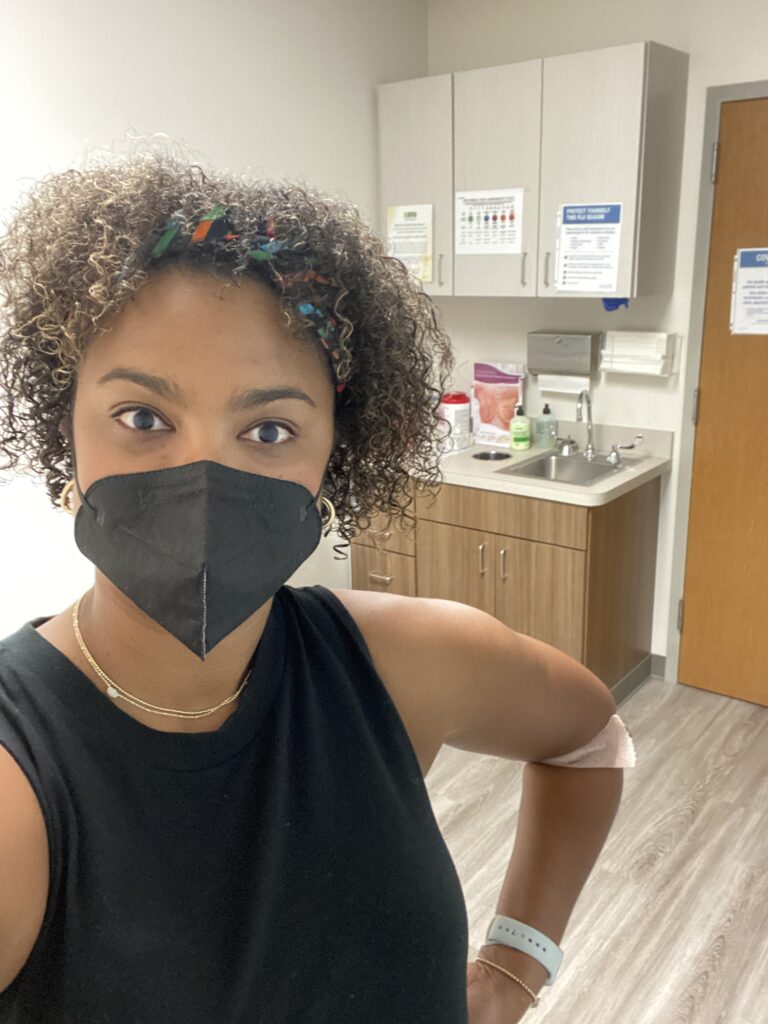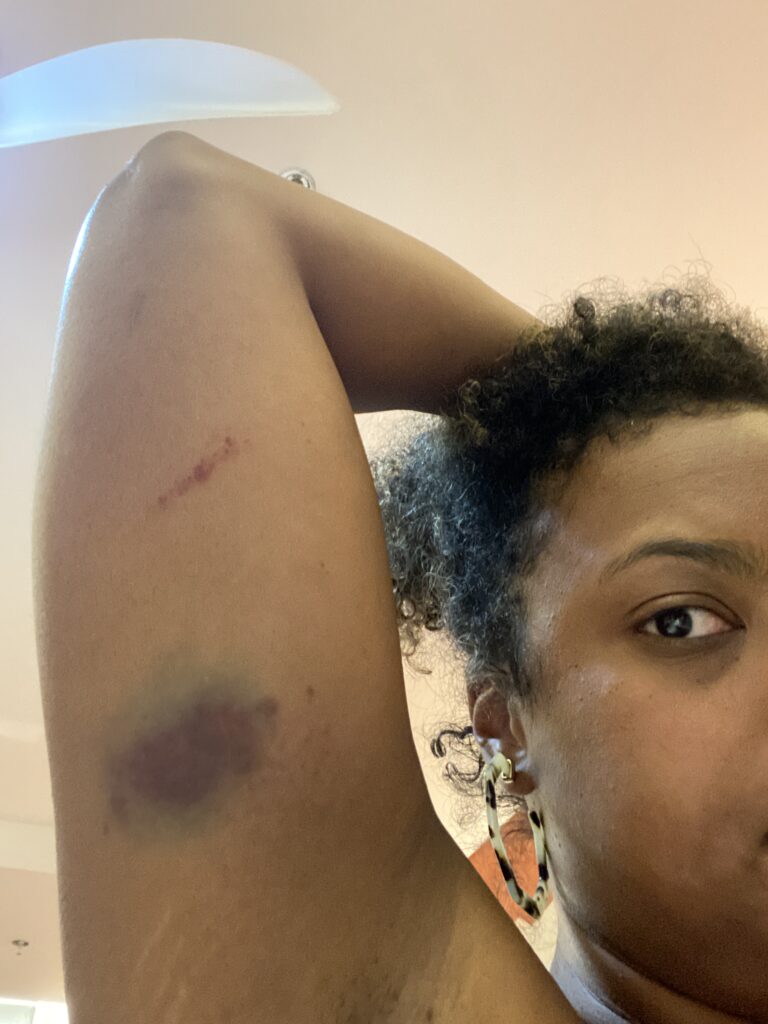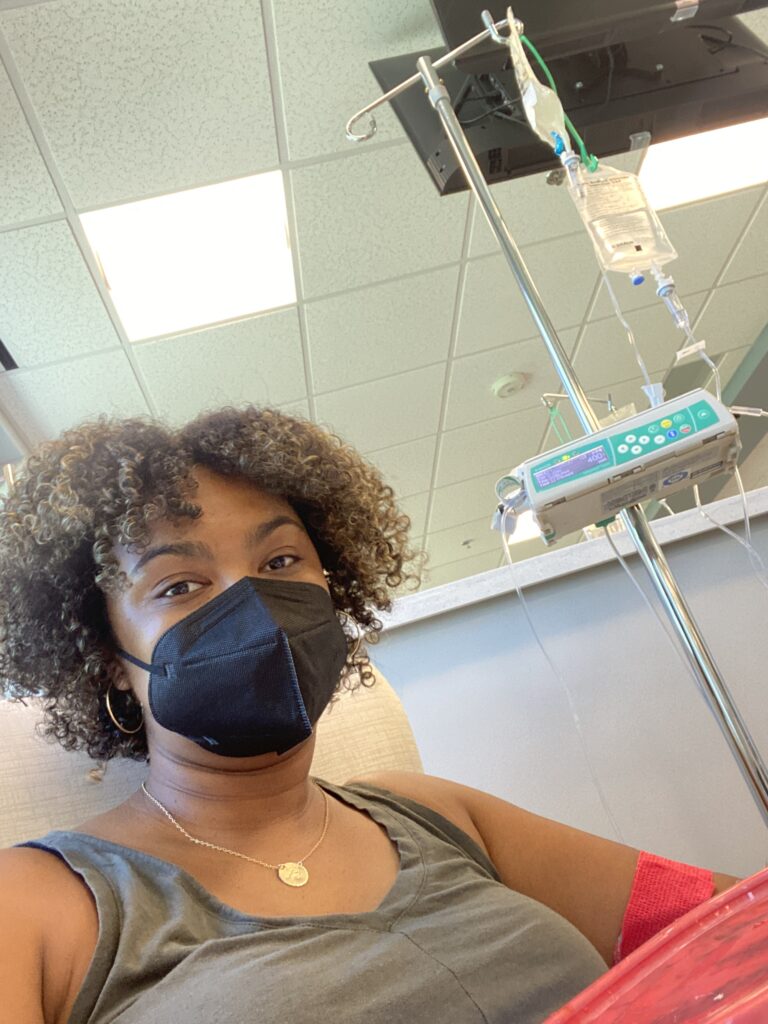Living with ITP: My 1st Year
Please Note: This is my story of living with ITP. I am not a medical professional and I’m not providing medical advice, just my personal experience since my diagnosis. To my ITP warriors, please consult your hematologist to determine the best approach for your situation. I’m rooting for you.

ITP has changed and is changing my life. I just crossed the year mark of living with ITP and I can hardly believe everything that’s happened in such a short span of time.
I hadn’t heard of ITP before I started showing symptoms and maybe you haven’t heard of it either until you saw me sharing snippets of my journey on social media.
Maybe you’re landing here because you recently got a diagnosis or are going through an episode, and you’re feverishly Googling to find anything you can, anything that’ll give you a glimmer of hope, relief or information that’ll help guide your next doc appointment. I’ve been there.
I hope that by sharing my experience it helps you – whether you’re going through the challenges it brings or you’re supporting someone with ITP.
What is ITP?
Immune Thrombocytopenic Purpura (ITP), is an autoimmune disease that is characterized by a low level of platelets, a blood component essential for clotting. It appears when the immune system mistakenly attacks platelets. When platelets reach a critically low number, ITP is potentially life-threatening because platelets are responsible for your blood clotting. ITP can be acute or chronic. For me, and most adults that are diagnosed, it’s chronic.
As rare as ITP is, now that I have been telling people I have it, someone always seems to know someone that has it – and talks about how they had a crazy experience with it. For me, my craziest experience has been my diagnosis last September, seemingly out of nowhere. In hindsight, it likely happened over the course of three weeks, starting around (or even on) my 34th birthday.
How ITP Showed Up In My Life
I had a two week period – not a period and spotting (gaslighting myself). It was heavy for two weeks. That was sign one. Shortly after it ended, I started seeing random bruises on my body, about two at a time, everyday when I woke up. The older they were, the larger they got. Was I sleepwalking? Along the way, I was getting blood spot freckles (petechiae) on my face and a large blood sore in my cheek. That all happened in less than a week.
A friend came over and I showed her my body and my mouth and asked, “Has this ever happened to you?” She answered no, so I went to urgent care for an appointment and a blood test. I felt fine otherwise, was a healthy person until this, and my blood work within a year was normal. How quickly things changed.
A day after my urgent care visit, I got a call from the office and I found out that I had 2k platelets and needed to go to the emergency room immediately for testing and for an official diagnosis, but the fact that I had 2k platelets was enough to worry. That’s because the average platelet range for an individual is 140-400k. I was at risk for life threatening bleeding because my blood wouldn’t clot should something happen to me. A cut, an accident, you name it. I cautiously drove myself to the emergency room after dropping off my dog to boarding.
After a day of tests and the arrival of my godmother from Sacramento that afternoon, I was officially diagnosed with ITP and admitted to the hospital. This was September 2021 and with COVID numbers going up after the Delta variant was poppin over summer, I was lucky to get a bed. I actually got the last room in the hospital, which as luck would have it, had the best view of Downtown Dallas.
While hospitalized, I received IVs of platelets and steroids and blood tests every few hours (even in the middle of the night) over the course of four days until my platelets got up to a level where I could continue treatment at home. I was discharged with 100 and within a week, I was at 446k.
That number. THAT NUMBER.
It was a great number. The deepest exhale.
It shot my platelets up (intended), but I have to be the bearer of bad news: They didn’t hang on.
My platelets dropped by over half within a month and continued to tap dance down, even with a moderate dose of prednisone. Because of the effects of prednisone, a steroid, I started to explore different therapies and my doctor said that I was a good candidate for IVIG. We’ll get into that in a second.
How I’ve Been Treating My ITP Over the Past Year
While I am happy for every gain in my ITP journey, after that initial 446, and the plummet that soon followed, I haven’t gotten overly excited about any time my platelets have been in range, but I have remained hopeful. It’s hard to explain outwardly, but I know how it feels and I’m sure others with ITP know, too. I am constantly wondering what’s happening in my body, if I’m doing something that is making it better or worse. Thankfully, I’ve had a lot going on in my personal and professional life to keep me distracted, and my care team at Texas Oncology has been proactive and supportive in this process.
Back to the treatments. As I’ve been living with ITP, I’ve gone through two major types of treatment since being diagnosed in September: steroids and infusions.
IVIG is an immunotherapy that was recommended for me. I had my first treatment a week before Christmas and within 24 hours I was in the ER with side effects like migraine, fever, nausea and vomiting. I was so weak and my migraine was so bad I couldn’t even walk. My boyfriend (now husband!) had to carry me down the stairs and into the hospital. The doctors and advisors said that in most individuals, side effects would have presented themselves mildly and during the infusion. I guess I just had to be different! I did not continue with the second infusion, and my platelets did not raise much from just one infusion. So, guess what? I started back on Prednisone through Q1 of 2022 and slowly tapered off into spring.
Buuuuuut my platelets plummeted again in May while I was on vacation, and I have been on an aggressive treatment plan ever since. As I’ve been living with ITP, I’ve learned that once my platelets hit about 70k, I just plummet after that. This time, I plummeted down to 2k again, and ended up in the hospital with platelet transfusions and a high dosage of dexamethasone first before going back to prednisone. Despite summer looking fun, it was anything but.
You’re seeing me mention prednisone a lot. Here’s why.
Prednisone helps platelets produce because the steroid suppresses the immune system. That, of course, leaves me at risk for other infections, so one has to be careful. Prednisone also makes me feel less like myself than ever, in every way. It causes mood swings, anxiety, increased heart rate, rapid weight gain, and insomnia to name a few. I’ve taken doses between 10mg and 100mg and up until a month ago, was on the high end of doses and had been on that dosage for two months. I started tapering off steroids after four infusions of Rituxan, which began late June 2022 and wrapped a week before my birthday. I would’ve been wrapped at the end of July, but I got COVID in early July and had to miss two weeks.
My Latest Treatment
Rituxan/Rituximab is an antibody that is designed to target and bind to the surface of B-cells. In ITP, B-cells produce antibodies that destroy platelets, instead of fighting infection like they should. When the Rituxan binds to these cells, it helps the immune system destroy the b-cell, and that helps the antibodies that destroy platelets decrease. The effects of this therapy can last for years without having to take steroids or undergo any other treatments. My quality of life can drastically improve, dare I say, feel like I’m back to normal.
I had to try it. And I’m the most hopeful I’ve been in a year. My platelet count was 182k as I celebrated my 35th birthday in August and was two weeks out from my wedding. At my last doctor appointment which was a week after my wedding, my platelets were at 170k. Because I’m in range, my next appointment isn’t for another six weeks. Right now, I have been off of prednisone for a month. I am hoping for a high number! Hell, I’m hoping to be moving toward remission but one step at a time.



What My Future with ITP Might Look Like
Now, if Rituxan doesn’t work for me long term, then I am really leaning toward having a splenectomy, which would completely eliminate the problem. While I’d like to keep my spleen, I also don’t want to be living with ITP and constantly have a fear of platelets dropping or trying different medications and therapies (and their side effects on my body). Long term steroid usage cannot be the option. Plus, I have failed to mention how expensive these therapies, transfusions and hospitalizations have been – even the IVIG that didn’t work. The “cheap” route is the steroids, of course. I’ve been fortunate to receive some copay assistance as some of these treatments have been damn near salary matching.
How I’m “Really” Living with ITP
Platelet number aside, living with ITP and the treatments have wreaked havoc on my body and on my self confidence. Being the face of my brand on social media (my income source) has only amplified this for me, but I keep telling myself it’s temporary, the change in my appearance will go away the longer I’m off medication and that I’m beautiful and impactful no matter what I look like or what I’ve gone through the past year. My weight has fluctuated (I’m the heaviest I’ve ever been), I have the “moon face” that everyone talks about, my skin texture has changed, my hair is thinner, and my PMS symptoms have amplified.
It’s been so important for me to stay connected to my support system, make time for fun as well as relaxation, and stay on top of my nutrition. I drink almost a gallon of water a day and incorporate foods with folate, iron, vitamin K, and healthy fats when I haven’t been celebrating life milestones (got off the wagon between my birthday and wedding).
How ITP Has Made Me Better
I told myself the first night I was in the hospital, looking out of the window at Dallas, that the moment I got out of there, that I was going to stop cheating myself out of what I really wanted out of life. That I was going to do what I wanted to do, how I wanted to do it, as unafraid as possible. To really embrace life as it comes, and say yes more. To others, to myself. The past few years before my diagnosis really weighed on me. Showing up became harder and harder with each passing day, both personally and professionally, and the pandemic didn’t help. I entered 2021 really focused on changing my life. I was doing the healing work leading up to my diagnosis – and after that, I really started living.
Even with the ups and downs of living with ITP, I’ve been experiencing a sense of joy over the past year that I didn’t think was possible. I’m having the most fun with The Kachet Life, both the creator and the coach. Supporting my clients as they make their literal dreams possibilities fills my cup in a way that I can’t describe. Being able to create content that inspires, delights and or helps them be better makes me better and gives me something to go after on those days when I really don’t want to or can’t get out of bed. And there are more of those than what meets the Instagram eye.
As a whole, my personal life is so much calmer and I am still in awe that I’m able to stay so connected to my loved ones back in California, and that I’ve cultivated a marriage through all of this, too. It was hard as hell to balance the highs and lows that I had emotionally on the steroids, but I am so supported and encouraged every day by my now husband, and my group of friends.
As positive as I remain, I can’t deny the cynic in me that says, “See, you can’t have it all.”
It’s not going to stop me from trying. Even if it’s for more balance. Having ITP won’t kill my dreams. I’ve come too far to quit now.